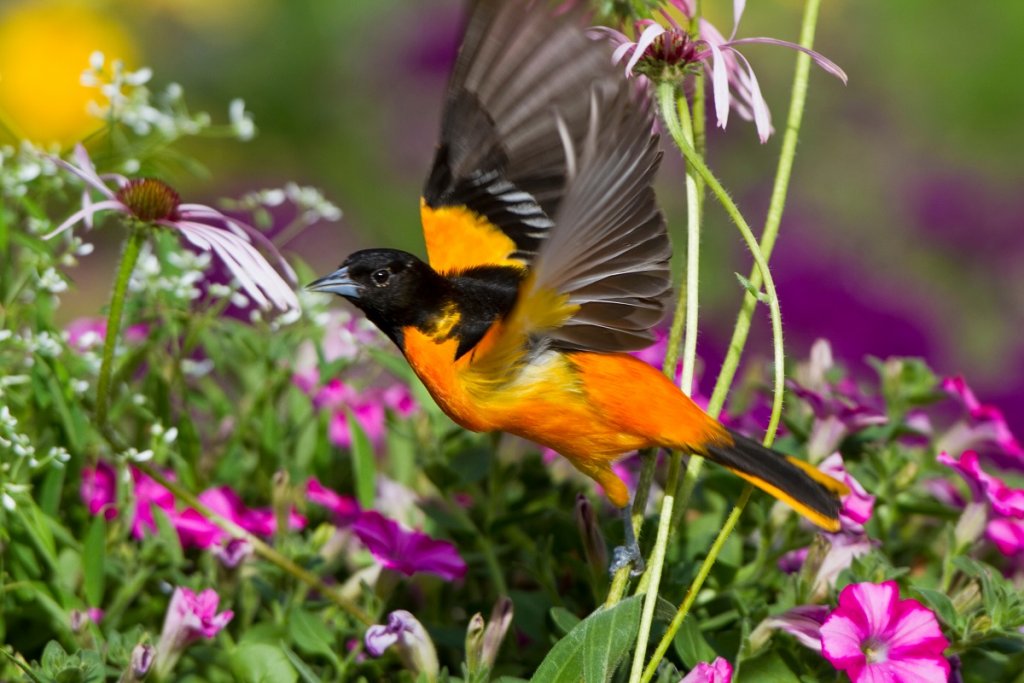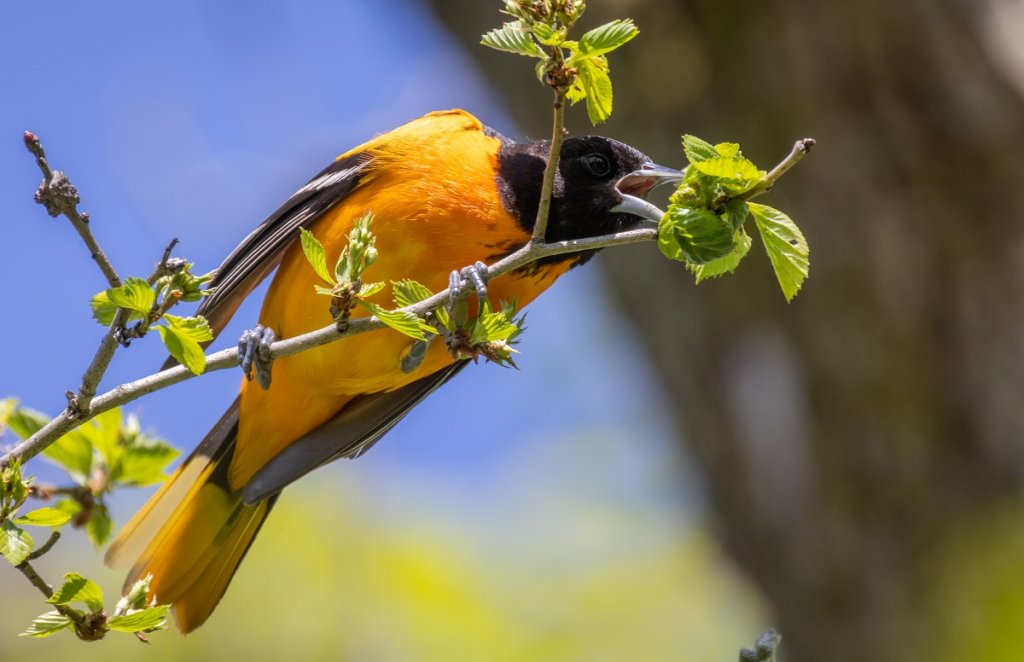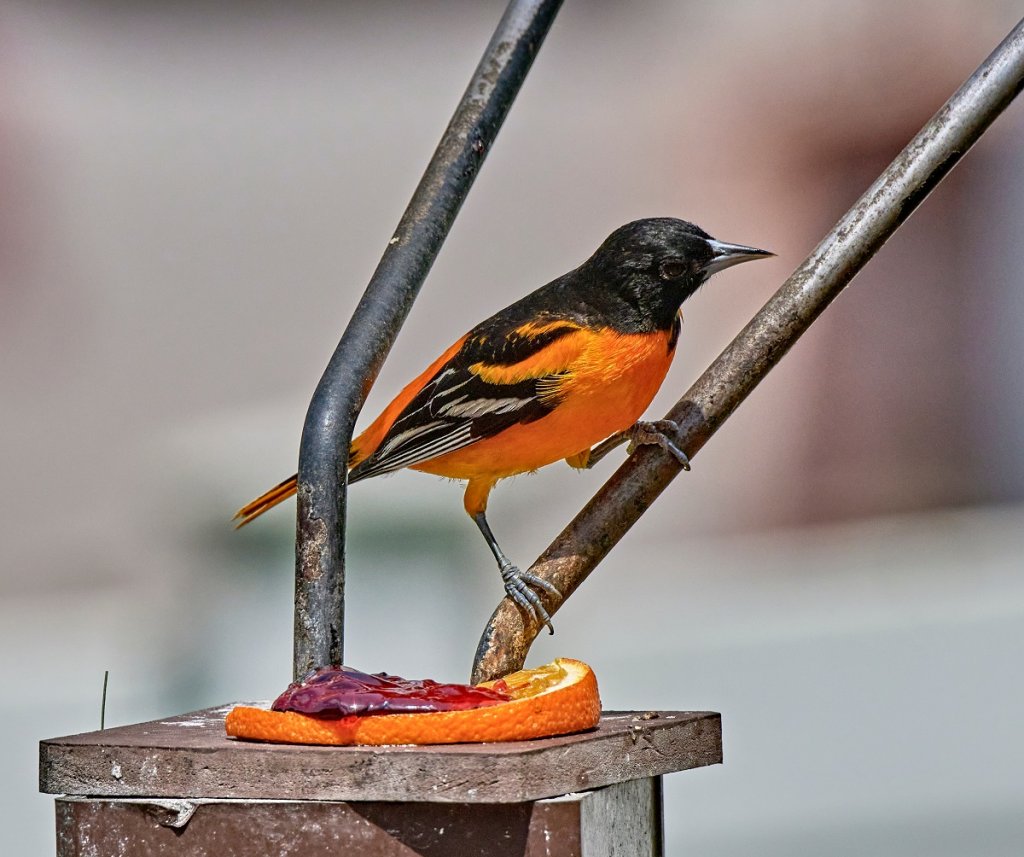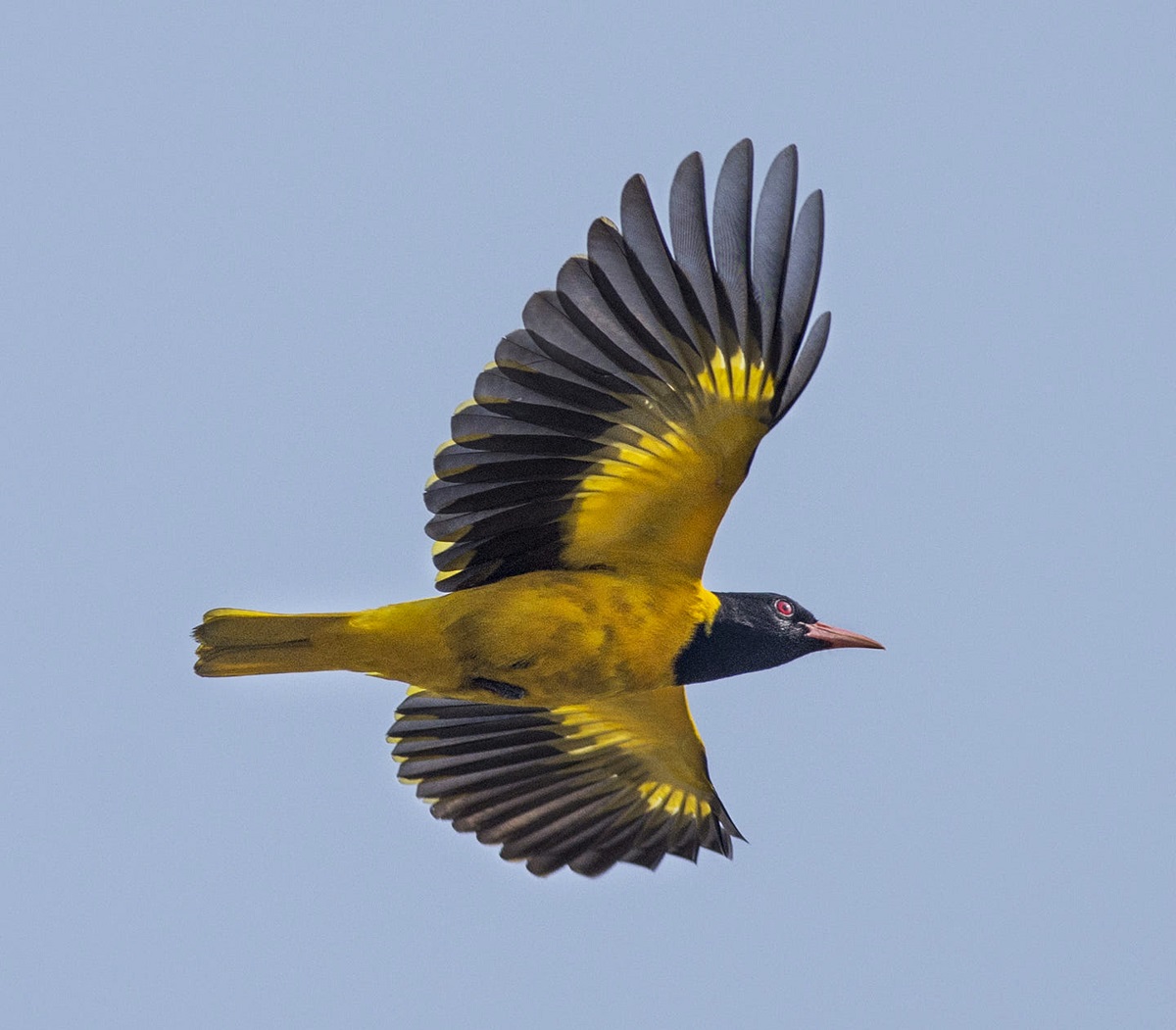Looking to catch a glimpse of an Oriole this year? Their migratory patterns are slightly different when compared to other North American songbirds, so check out this guide below on when and how you can track down this delightful black and orange or yellow songbird!
Baltimore orioles spend a good part of the year on the move. To them, the home where they breed for 4 or 5 months may be in the northeastern quadrant of the US and Canada, but they spend the rest of the year getting to and from the winter quarters in Mexico and Central and South America.
While Baltimore orioles are inhabitants of the east coast, birders on the west coast have opportunities to catch other breeds of orioles (such as the Bullock’s oriole) that live further west in areas such as Arizona and California.
Their migratory patterns are very similar to the Baltimore orioles, so spotting them boils down to knowing when they arrive and when they leave. Let’s dive into the migratory patterns of these beautiful North American songbirds.

Timeline of Baltimore Oriole Migration
The breeding season of the Baltimore oriole is short. These long-distance migrants arrive in their breeding grounds in late spring (most come in early May) and only last until July. Due to their abridged breeding season, most Baltimore orioles only raise one brood of young birds yearly.
If you want to catch a glimpse of an oriole this year, knowing when they will arrive in your area and their migratory path is a great way to catch a glimpse of these migratory birds.
April-May: Baltimore orioles return from their wintering grounds during spring migration.
May-July: Late spring to early summer is their peak nesting season. These songbirds make nests in rich deciduous forests with trees like maples, cottonwoods, and elm trees.
August-September: After a short breeding season, oriole migration begins. Residents along the coastline of the Carolinas and those in southern states can catch a glimpse of these long-distance migrants as they head to their wintering grounds.
November-April: After fall migration, these long-distance migrants sometimes flock to Florida in the off-season but fly further south to the Caribbean, parts of southern Mexico, and even the northern tip of South America.
Watch our video and learn 7 things about orioles you may not have known about!
When Does Breeding Season Start?
The breeding season of Baltimore orioles (Icterus galbula) starts in late March or early April. Often, male orioles return to their breeding grounds a few days before female orioles establish their territory. Their beautiful warbling songs are a part of the dawn chorus and indicate an establishment of their territory and an effort to attract a male.
Once the male attracts a mate, the female builds a nest anywhere from 6 feet to 90 feet above the ground in the branches of deciduous trees like an elm or maple tree. The female lays 3 to 7 gray or bluish-white eggs, which hatch after two weeks. The babies are fairly independent two weeks after birth.
As the Baltimore oriole breeding season is incredibly short, the pair typically only raise one brood per season before they migrate south for the winter, which often begins as early as July. If predators eat the eggs or the babies die, they wait until next year to breed again.

When Should I Put Out My Oriole Birdfeeder?
To attract the first springtime migrants, oriole feeders should be placed in a safe location from late March to Early April. While you may notice a higher number of orioles early in the season, that number starts to dwindle as you move later into the summer. It’s important to note that the breeding season of migratory orioles is short, and many start to migrate as early as July.
While visitors to your backyard feeders plummet as you move later into the breeding season, keeping your oriole feeders up until at least September is super important. Even if you live in the northern part of the United States, orioles that spend their breeding season as far north as Canada or Alaska may use your backyard feeders at a pit stop to refuel on their way to their wintering grounds.
After September, it’s safe to take your feeders down until the following season. The good news is that orioles will remember your feeding spot once it is discovered and will return the next year!
Orioles love berries too, so what you have planted in your yard may be fair game.
Where Do Orioles Migrate?
These North American songbirds are considered medium and long-distance migrants. During the breeding season, some flocks travel as far north as Canada, but most spend their time in New England, the Great Lakes, and the Central Plains of the United States.
When their short breeding season is over, these migrants pass through Texas and other southern states for South and Central America. Wherever you live in the eastern portion of the United States, birders can catch a glimpse of these bright and cheery birds during breeding or migration.
Do Other Orioles Migrate?
In addition to the Baltimore orioles, the most widespread orioles found in North America, eight other species of orioles peppered throughout the United States, Canada, and Mexico. The Bullock’s oriole, for instance, has a similar migratory pattern to the Baltimore orioles but lives on an opposite coastline.
During the breeding season, the Bullock’s oriole spends its breeding months on the west coast near the Rocky Mountains and heads to Central America for wintering grounds.

How To Attract Orioles
Orioles aren’t your average songbirds that eat traditional songbird mixes. Attracting orioles to your backyard space requires a unique oriole feeder with special food. Since orioles primarily eat berries and fruit, placing a feeder with grape jelly, jam, or other fruits is a great way to draw their attention. It may take a few seasons for local orioles to discover your feeding station, but once they spot it, they won’t forget it.
Migratory birds remember the locations of good feeding spots and will return to them yearly. Even after the breeding season, ensure you leave your feeders stocked with jelly and sugar water (like the sugar water used in your hummingbird feeder) until at least late September.
Unlike other migratory songbirds, orioles won’t use birdhouses. For birdwatching, head to an area (rich in tall trees like your local park. Since orioles build nests as high as 90 feet off the ground (similar to Woodpecker nests), thick forests are great for notable oriole sightings.

